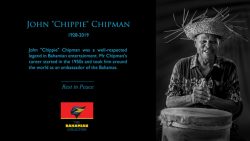The future of Naval aviation is beginning to take shape in a fashion that should cause any potential foes to take note.
The MH-60R, acknowledged as the cornerstone of the Navy’s helicopter master plan and recently approved Concept of Operations, was put to the test at the Navy’s only instrumented undersea range on the east coast. A group of approximately 40 individuals from Air Test and Evaluation Squadron 21, Air Test and Evaluation Squadron 1, and Lockheed-Martin recently completed a highly complex and immensely successful detachment to the Atlantic Undersea Test & Evaluation Center, Andros Island, Bahamas. In the three-week period, this team of integrated professionals executed over 100 flight hours on two MH-60R aircraft coordinating multiple surface and subsurface fleet and range assets. The detachment, under the leadership of Lt. Steve Nassau, overcame several potential show-stoppers including AUTEC range boat availability, transportation cancellations, limited off-site quarters for detachment personnel, and increased off-site scheduled maintenance requirements; a direct result of outstanding planning, aircraft availability, and excellent execution.
More than 100 miles long and 40 miles wide, Andros is the largest island in the commonwealth of the Bahamas and the fifth largest in all of the Caribbean. Despite its large size and its lush (some would say swampy) habitat, Andros is isolated and sparsely populated. It is perched next to the largest reef system in the region, and also one of the deepest trenches in the Atlantic Ocean floor. It is not the stereotypical Caribbean retreat oft contemplated during the Maryland winter.
It is, however, these specific traits that make Andros the ideal location for the Navy’s premier undersea, instrumented test range. AUTEC, only 177 miles southeast of West Palm Beach, Fla., was the perfect location for the HX-21 detachment to execute the demanding flight test of the MH-60R and its vast array of improved sensors and capabilities, including the new acoustics suite, the fleet will soon enjoy.
According to Cmdr. James Glass, the MH-60R test director, “The MH-60R’s acoustic testing is an integral and critical part of DT-IID. The purpose of this fourth phase of testing is to evaluate the complete and integrated Air Weapons System and provide an assessment of the capability to accomplish the MH-60R primary missions of Surface and Undersea Warfare (SUW and USW). Integrated systems include the acoustics suite with the Airborne Low Frequency Sonar, an advanced multi-mode radar system, improved Identify Friend or Foe system, and a cutting-edge Electronic Surveillance Measures system. In addition to the sensors, the aircraft will be able to deliver the knock-out punch with a weapons system incorporating guns, missiles, and torpedoes.”
For the aircraft to be most effective in its subsurface missions, the development of the sonar and associated processing equipment is of the greatest importance. This test provided the Navy with critical insight into the capabilities of the USW sensor suite. Central to the suite is the ALFS. The ALFS, a vastly improved sonar over legacy systems, operates analogous to a radar system in that it provides the helicopter crew with information regarding the location of potential contacts of interest.
“ALFS has been under development for several years and has been tested in various aircraft,” according to Glass. The current effort is to integrate that system into the MH-60R aircraft and improve the capabilities to detect, localize, attack, and conduct damage assessment of undersea targets.
The acoustics suite also includes a sonobuoy launching system and an acoustic mission planning system. Those features allow the Romeo to assess the capabilities of the system and to take advantage of the situation passively as well as actively.
“Previous test phases”, according to Glass, “were designed to evaluate and develop individual subsystems, often in isolation.” “DT-IID is the next step where integrated total system performance is being evaluated in a mission representative manner.” The mission profile events developed for MH-60R DT-IID are challenging and demanding simulated missions in controlled environments. As a potential example, the scripted mission might be a combination of undersea warfare while simultaneously conducting surface surveillance and over-the-horizon-targeting via the data link in a littoral environment.
“Even with all of its state-of-the-art technology, the Romeo is only as good as the team that develops it, supports it, and fights it.” Glass continued stating the “NAWCAD team that successfully conducted these independent and integrated mission systems tests at AUTEC is responsible for making this program run on all cylinders.”
“There was an inordinate amount of dedication and sacrifice expended by all detachment personnel. They have been performing at that level for a long time and they deserve the credit for the success of this most recent MH-60R developmental test evolution.”
Submitted by MH-60R Test Team



